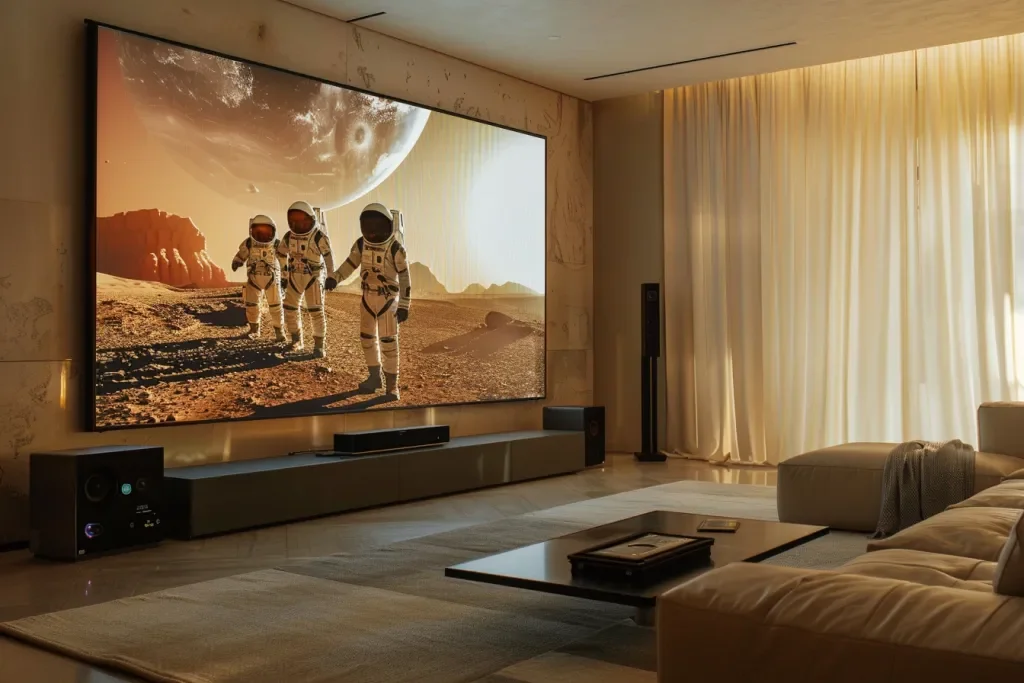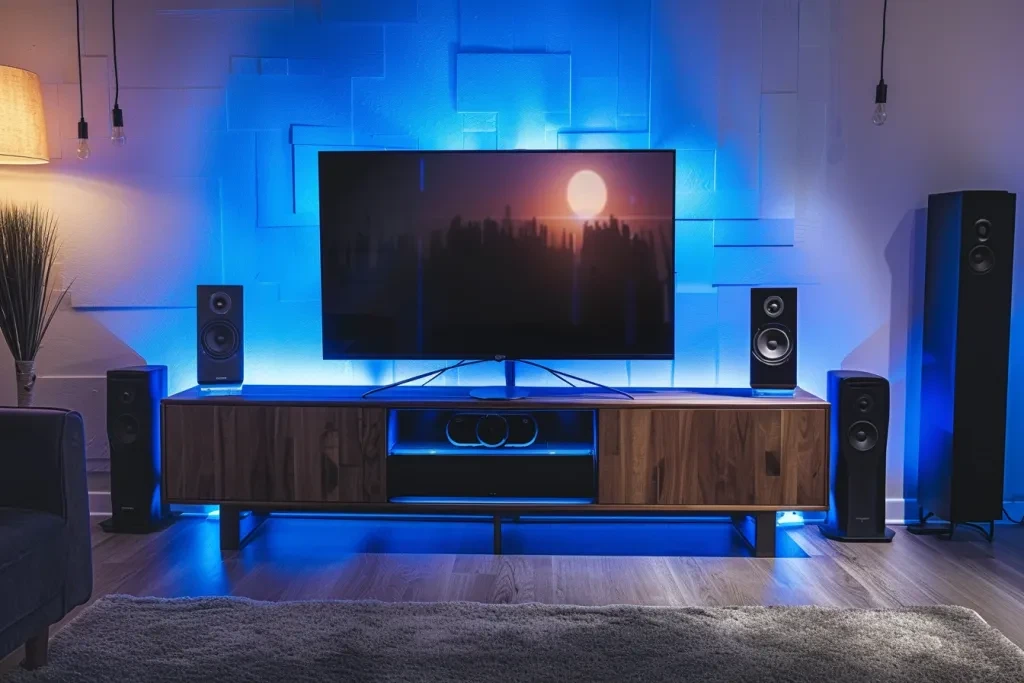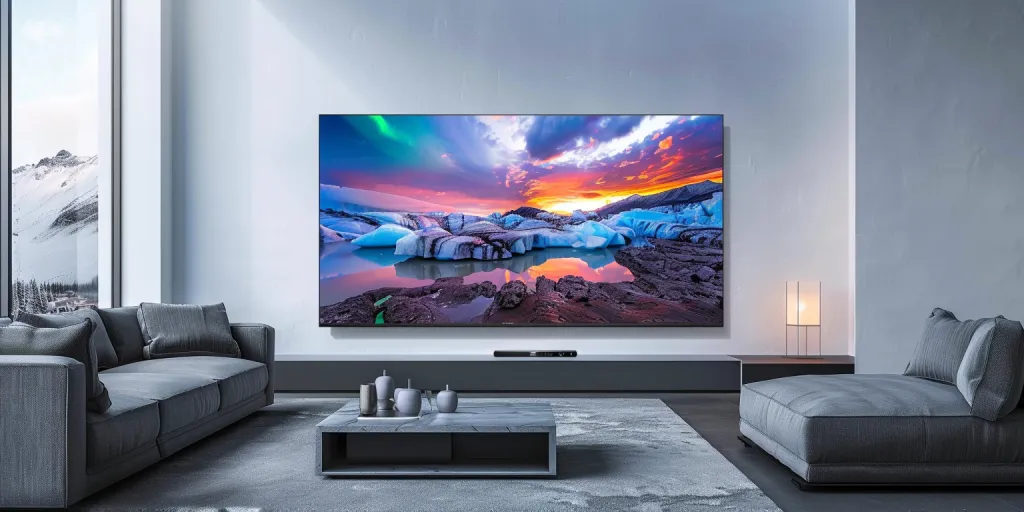In an era where technology evolves at lightning speed, televisions remain a staple in households worldwide. From their inception to the latest smart TVs, they have undergone tremendous transformations. This guide will delve into the intricacies of televisions, exploring how they work, their advantages and limitations, and offering tips on selecting and using them effectively.
Table of Contents:
1. What is a television?
2. How does a television work?
3. Benefits and drawbacks of televisions
4. How to choose a television
5. How to use a television
What is a television?

A television, often simply called a TV, is an electronic device designed for receiving and displaying video and audio signals. From the bulky, box-shaped CRTs of the past to the sleek, wall-mounted LCDs and OLEDs of today, televisions have always served as a primary source of entertainment, information, and connection to the world. They have evolved to offer not just linear programming but also interactive content, streaming services, and internet connectivity, transforming into smart TVs that serve as multimedia hubs in our living rooms.
The core function of a television is to convert electrical signals into visual imagery and sound. This process involves a complex interplay of components and technology, which has evolved significantly over the years. Initially, televisions relied on analog signals and cathode-ray tubes (CRTs) to create images. However, the advent of digital broadcasting and advances in display technology have led to the development of televisions that provide clearer, sharper, and more vibrant images than ever before.
Today’s televisions are not just about watching your favorite shows or movies; they are sophisticated devices that offer a range of features such as internet connectivity, access to streaming platforms, and even voice control. With the integration of smart technology, TVs have become central to the modern smart home ecosystem, capable of interacting with other devices and providing personalized content based on the viewer’s preferences.
How does a television work?

Understanding how televisions work requires a dive into the basics of display technology and signal processing. At its core, a television receives broadcast signals, whether through over-the-air antennas, cable, satellite, or internet, and converts these signals into pictures and sound. The type of display technology—be it CRT, LCD, LED, OLED, or QLED—plays a crucial role in how this conversion happens and affects the quality of the image produced.
CRT televisions work by firing electrons through a vacuum tube at a phosphorescent screen, creating images pixel by pixel. This technology, while outdated, laid the groundwork for modern televisions. LCD (Liquid Crystal Display) and LED (Light Emitting Diode) TVs use a backlight to illuminate pixels arranged in a grid, with liquid crystals controlling the amount of light that passes through each pixel to create images. OLED (Organic Light Emitting Diode) and QLED (Quantum Dot LED) televisions, on the other hand, represent the pinnacle of display technology, offering superior brightness, color accuracy, and energy efficiency by allowing individual pixels to emit light independently or enhancing LED backlighting with quantum dots, respectively.
Digital signal processing is another critical aspect of how televisions work. This involves decoding the digital signals received via antenna, cable, or internet into a format that can be displayed on the screen. Modern televisions are equipped with powerful processors that not only decode signals but also upscale lower-resolution content, reduce motion blur, and optimize color and contrast to enhance the viewing experience.
Benefits and drawbacks of televisions

Televisions offer numerous benefits, from providing access to a wide range of entertainment and information to serving as a focal point for family gatherings and social interactions. They have become more energy-efficient, with advanced display technologies offering stunning visual experiences that were unimaginable a few decades ago. Smart TVs, with their internet connectivity, open up a world of streaming content, allowing viewers to access a vast library of movies, series, and documentaries on demand.
However, televisions are not without their drawbacks. The sedentary lifestyle they promote has been linked to various health issues, including obesity and reduced physical activity. Additionally, the blue light emitted by screens can disrupt sleep patterns, leading to insomnia and other sleep disorders. There is also the issue of content quality and the potential for exposure to inappropriate material, which is a concern for parents of young children.
Moreover, the rapid pace of technological advancements in televisions can make purchasing a new TV a daunting investment, as models can become outdated relatively quickly. This, coupled with the environmental impact of disposing of old TVs and the production of new ones, raises sustainability concerns.
How to choose a television

Choosing the right television can be overwhelming given the plethora of options available. The key factors to consider include the display technology, screen size, resolution, smart features, and connectivity options. Understanding your viewing habits and the space where the TV will be placed is crucial in making an informed decision.
Display technology significantly affects the picture quality and price of the television. OLED and QLED TVs offer the best image quality but come at a premium, while LED TVs provide a good balance between cost and performance. Screen size should be chosen based on the size of the room and the viewing distance, ensuring a comfortable and immersive viewing experience without overwhelming the space.
Resolution is another important consideration, with 4K UHD TVs offering four times the detail of Full HD models. As 4K content becomes more widespread, investing in a 4K TV is a future-proof choice. Smart features, such as built-in Wi-Fi, access to streaming apps, and voice control, enhance the functionality of the TV, turning it into a multimedia hub. Lastly, ensure the TV has enough HDMI and USB ports to connect all your devices.
How to use a television

Using a television effectively goes beyond just turning it on and flipping through channels. To get the most out of your TV, familiarize yourself with its features and settings. Adjust the picture settings according to the lighting conditions in your room, and explore different sound modes to find the one that best suits your content. If you have a smart TV, connect it to your home network to access streaming services, apps, and firmware updates that can improve performance and add new features.
Conclusion: Televisions have come a long way since their inception, evolving into sophisticated devices that offer more than just a way to watch shows and movies. Understanding how they work, their benefits and limitations, and how to choose and use them can enhance your viewing experience and ensure you get the best value for your investment. Whether you’re a movie buff, a sports fan, or someone who enjoys binge-watching series, there’s a television out there that’s perfect for you.




